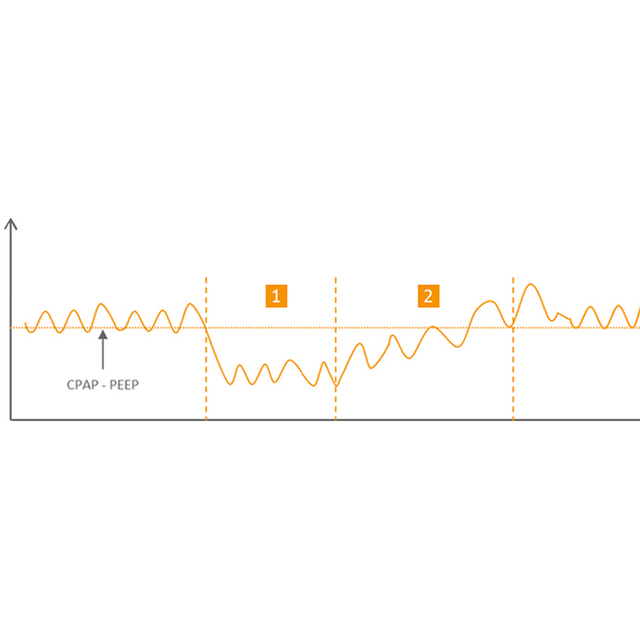Las pérdidas de presión que se producen por la boca o por un ajuste inapropiado de la interfaz en la nariz del paciente se conocen como fugas. Representan un problema importante y considerablemente frecuente para los cuidados de enfermería y para la eficacia de la terapia nCPAP.
La correcta colocación de la interfaz puede ayudar a corregir muchas fugas, pero no siempre se van a poder evitar. Esto sucede especialmente en el caso de las fugas que se producen por la boca. Si las pérdidas de presión son demasiado grandes, puede producirse una disminución de la saturación de oxígeno y bradicardia. Las fugas suceden generalmente de manera intermitente, es decir, a intervalos irregulares. No siempre es posible impedirlas con las técnicas de enfermería habituales.
La compensación de fugas automática ayuda a proporcionar a los pacientes la atención que necesitan con total fiabilidad. Esto permite compensar las fugas y las pérdidas de presión que se producen en un momento dado sin necesidad de manipular al paciente.
La compensación de fugas LeakAssist de los dispositivos medinCNO, medinCNOmini y medin-NC3 ofrece una herramienta fiable, controlada y eficaz.
Compensación automática de las pérdidas de presión
Aumento y disminución controlados del flujo de gas
Alto grado de seguridad del paciente
Parámetros de flujo visibles en todo momento
Se puede conectar de manera opcional

LeakAssist puede aumentar el flujo de gas respiratorio hasta 2 l/min (medin-NC3: 5 l/min) para compensar las pérdidas de presión inferiores a 0,5 mbar como presión objetivo. De igual forma, es posible disminuir el flujo de gas hasta 2 l/min (medin-NC3: 5 l/min) para reducir rápida y eficazmente los aumentos de presión.
Esto, sumado a los ajustes de alarma individuales, permite ofrecer un alto nivel de seguridad para los pacientes más pequeños. Si no logra alcanzarse la presión objetivo con el nivel de compensación máximo, el dispositivo emite la alarma correspondiente.
Cuando esto sucede, se muestra en pantalla una ventana en la que puede verse la presión objetivo seleccionada y el flujo de compensación en tiempo real. Además, el usuario puede controlar todos los parámetros del flujo en todo momento.
1 Disminución de la presión debido a una fuga
2 Aumento gradual de la presión mediante el incremento adicional del flujo de gas